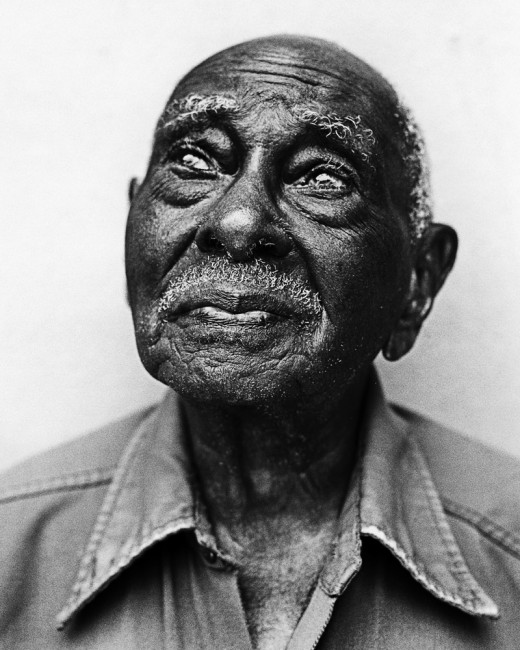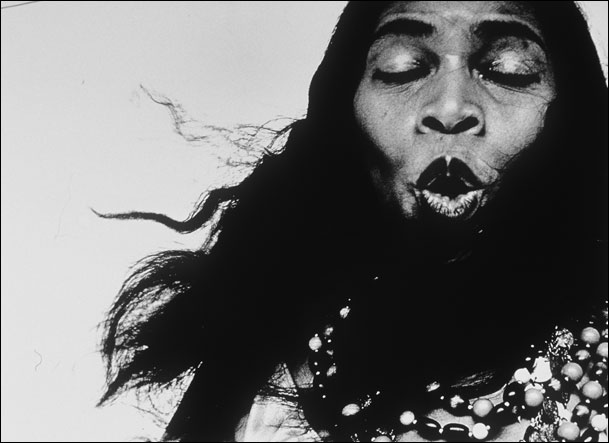
ඔබේ හැඟීම්බර චෝදනාව
මම දෝතින්ම පිළි ගන්නවා. චානක.
අවස්ථාව ලබාදීම ගැන මා
ඔබට ස්තූතිවන්ත වෙනවා.
මමත් හැඟීමෙන්ම පිළිතුරු දෙන්න
වෑයම් කරනවා. :)
මේ මගේ පුද්ගලික අදහසයි.
අන් අය මීට වඩා බොහෝ වෙනස් විය හැකියි.
තමන්ගෙ රටාව ඔවුන්ම කියාවි.
--------------------------------------------------------------------------
චානක ධර්මසෙන[[[ ඔබතුමන්ලා තමන්ගෙ මතය තහවුරු කරගන්න සටන් කරන වෙලවෙ අපෙ පින්තුරෙකට ලයික් එකක් දැම්මත් ඒක මසුරන් වටිනව. හරි, අපෙ පින්තුරෙ කැතයි කියමුකො. ලයික් කරන්න බෑම කියමුකො. එතකොට දෙයියනේ ලයික් කරන්න බැරි හේතුව කියල කමෙන්ට් එකක් දාන්න]]]
පිටු ගනන් ටයිප් කරන්න ආසයි නම් වැදගත් ඡායාරුපයක්, ලෝකෙ ප්රසිද්ධ ඡායාරුප ශිල්පියෙක් ගැන ලස්සන පොස්ට් එකක් දාන්න.]]]
-----------------------------------------------------------------------
ඔබ කියන දේ ඇත්ත.
ඒත් ඒකට හේතුව
ඔබට තේරුම් ගැනීමට අපහසු වෙයි.
ඔබ තේරුම් නොගත්තත්
මගේ අදහ දැක්වීම මගේ යුතුකමක්.
ඔව්, මම නම් ලයික් දාන්නෙ ඉතා සීමිතවයි.
කමෙන්ට් දාන්නෙ ඊටත් වඩා අඩුවෙන්.
ෆොටෝ කමෙන්ට් ඉතාම කලාතුරකින්.
මම මූලිකවම බලන්නෙ
ඡායාරූප ශිල්පියාට
රේඛා, හැඩතල, වර්ණ ආදිය අතරෙ රිද්මය දකින
රසකාමී ඇසක් තියනවද කියල.
අපූර්ව නම් ඒකටත් ලකුණු දෙනවා.
ඡායාරූපය කාගෙද කියල බලන්නෙ අන්තිමටයි.
ඡායාරූප ශිල්පියා
මාන්නාධික, අත්තනෝමතික කෙනෙක් නම්
ප්රතිචාර නොදා ඉන්නයි බලන්නෙ.
ඡායාරූපය ගොඩක් හොඳ නම්
මට හිංසා කරන කෙනෙකුගේ වුණත්
ප්රතිචාර දක්වනවා.
හොඳ නිර්මාණයක් කියන්නෙ
ඔහුගෙ සිතේ පිරිසිදු අවස්ථාවක්.
ලයික් එකක් දාන්න
ඡායාරූපය යම් තත්වයකට
පිළිගත හැකි ප්රමිතියකට තිබිය යුතුයි.
ගන්නන් වාලේ
බාල ඡායාරූප ගන්න
නොසැලකිලිමත් නවකයන්
දිරිගැන්විය යුතුයි කියල
මම හිතන්නෙ නෑ.
එය ඔහු වේලාසනින්ම
නොමග යැවීමක් කියලයි
මම පිළිගන්නෙ.
ඡායාරූප එකින් එක
ඉක්මණින් බලාගෙන පහලට යනකොට
හිත නැවතුණොත් තමයි බලන්නෙ..
ඡායාරූපයක් හොඳ නම්
පහුකරගෙන යන්න බැහැ.
ඉබේ නවතිනවා.
පළපුරුදු කෙනෙකුගෙ නම්
සාමාන්ය මට්ටමක තිබුණට
ලයික් දාන්නෙ නෑ.
මට දැනෙන
හොඳ තත්වයක් තිබිය යුතුයි.
පළපුරුදු කෙනෙකුගෙ නම්
ගොඩක් හොඳ තත්වයක තිබුණොත්
කමෙන්ට් දානවා.
නවකයෙකුගෙ නම්
සාමාන්ය මට්ටමක තිබුණත්
ලයික් දානවා.
වැඩි හරියක් ගත යුත්තක් නැත්නම්
තියන සාමාන්ය මට්ටමේ දෙක තුනකට ලයික් දානවා.
ලොකු හොඳක් හෝ
හදන්න පුලුවන් අඩුපාඩුවක් පෙනුණොත්
ෆොටෝ කමෙන්ට් එකක් දානවා.
විස්තර අවශ්යයි කියල හිතුණොත් ලියල දානවා.
තවත් අයට ප්රයෝජනවත් කියල හිතුණොත්
බ්ලොග් එකට ගන්නවා.
මම ඉන්න අවස්ථාව අනුවත්
ප්රතිචාර අඩු වැඩි වෙනවා.
ලයික් එකකින් හා කමෙන්ට් එකකින්
ශිල්පියෙකුගෙ සිදු වෙනවට වඩා
ලොකු වෙනසක් මා තුළත්
සහභාගි වෙන අය තුළත්
වාදයකදි වෙනවා.
වාදය මොන විදියට ගියත්
අදාළ අයට පුහුණුවක් ලැබෙනවා.
ආවේගය නිසා හෝ ඔවුන් විවෘතයි..
ක්රියාශීලීයි.
අපි වාදයෙන් වෙනස් වෙනවා.
සාධාරණ, නුවණැති අය වැඩෙනවා.
අසාධාරණ, මද නුවණති අය
තමන්ගෙ සැබෑ තත්වය වටහා ගන්නවා.
එයත් වර්ධනයක්.
ඒ වුණාට මම වාද පටන්ගන්නෙ නෑ.
පටන් ගත්තොත් අවසානයක් දැකිය යුතුයි.
මේ වාද විවාද තිබිය යුත්තෙ
ශාස්ත්රීය කරුණු ගැනයි.
අවාසනාවකට එහෙම වෙන්නෙ නැහැ.
මම වරින්වර ක්රියාකරකම්
කිහිපයක් දාල බැලුවා.
කවුරුවත් දකින්නෙවත් නැහැ.
බ්ලොග් එකක් පවා පටන් අරන් අත්හැරල දැම්මා.
නවකයන්ගෙ කිසිම උනන්දුවක් නැහැ.
කාටවත් ඉගෙන ගන්න උනන්දුවක් නැහැ.
එහෙම නැත්නම් ගෙදර හුරතල් වෙලා
අපෙනුත් හුරතල් කිරීමක්
බලාපොරොත්තු වෙනවා.
මෙය කියවන නවකයන්
තමන් දෙස බලන්න.
ඔබට කමෙන්ට් ලයික් දාන කෙනා
කවුරුවුණත් කමක් නැහැනේද?.
කමෙන්ට් එක හරයක් නැතත් කමක් නැහැ නේද.
කවුරුහරි ඔබ සනසන්න හොඳක් කීවත්
ඔහු කියන්නෙ බොරු බව දැන දැනත්
ඔබ ඔහු කියන දේ සතුටෙන් බාරගන්නවා නේද?
හදවතිනම් ඔහුට තුති පුදනවා නේද?
ඊලඟ දවසෙ නිකමට ඔහුගෙන් අහන්න
ඇයි ඔබ ඒ ඡායාරූපයට කැමති කියල.
මේ අමිහිරි ඇත්ත ඔබට තිත්තයි.
අමූලික බොරුව ඔබට ප්රියයි.
ඒ විතරක් නෙමෙයි...
ඔබ ඔබට බොරු කියන කෙනෙක්
විමසන්නෙත් නැතුව
ලොකු හිතවතෙක් විදියටත්
බාරගන්නවා නේද.
ඔබ ඒ සුරතලයෙන්
ලොකු ආශ්වාදයක් ලබනවා නේද?
-----------------------------------------------------------------
ඔබත් ඒ අයුරින් සිතන,
සිඟිති පාසල් දරුවන් මෙන්
අවධානයෙන් තෘප්තිමත් වෙන
බොළඳ නවකයෙක් නම්
ඉතිරි ටිකත් කියවන්න.
-----------------------------------------------------------------
ඔබත් ඒ අයුරින් සිතන,
සිඟිති පාසල් දරුවන් මෙන්
අවධානයෙන් තෘප්තිමත් වෙන
බොළඳ නවකයෙක් නම්
ඔබේ ඉදිරි ගමනක් ගැන
විශ්වාසය තියන්න බැහැ.
ඔබ ඔබට වංචා කර ගැනීම
නවත්වන්න මට බැහැ.
විරුද්ධ වෙන්නත් බැහැ.
මා ඊට හවුල්වීමෙන් වළකින්න
මට ශක්තිය තියනවා.
ඔබට සැබැවින්ම
හොඳ ඡායාරූප ගන්නට උවමනා නම්
කණා ෂොට්වලට ලකුණු සොයන
ඉරණමට අනුව ජීවත්වෙන
කුසීත ජීවිතයෙන් මිදී
හැඟීමකින්, අරමුණකින්,
අධිෂ්ඨානයකින් යුතුව
තමන්ගෙ හැකියාව පෝෂණය කළ යුතුයි.
ලෝකෙ ඉන්න හොඳම ඡායාරූප ශිල්පීන්
ඔබට ලයික් දැම්මත් කමෙන්ට් කළත්
ඔබේ ඡායාරූප හැදෙන්න නැහැ.
ඔබට ඉතිරි වෙන්නෙ ඔබ අයුතු ලෙස ලබන
ස්වල්ප වූ හිස් වින්දනය විතරයි.
පිට රටවල්වල
පාසල් ශිෂ්යයෙක් වගේ
උදේ ඉඳල හවස් වෙන තුරු
න්යායත්, පුහුණුවත් ඇතුව ඉගෙන ගන්නා
ඡායාරූප ශිල්පය
අපි වගේ සාමාන්ය දැනුමක් ඇත්
සමූහ සාමාජිකයන්ගෙ
ලයික් කමෙන්ට් වලින් ඉගෙන ගන්න හදනවා නම්
ඒක මුළාවක්.
ලයික් සහ කමෙන්ට් බොම්බයි මොටයි වගේ.
පෝෂණයක් ඇති ආහාරයක් නෙමෙයි.
පෝෂණදායී ආහාර
මොනවද කියල ඔබ දන්නෙ නැහැ.
මුලින්ම ඒ ආහාර මොනවද කියා සොයාගන්න.
-------------------------------------------------------------------------------
ඔබට හැකි නම් මේ ප්රශ්න වලට
පිළිතුරු දෙන්න.
ඔබ ඉන්න තැන ගැන
යම් අවබෝධයක් ලබන්න පුලුවන්.
http://ridmasankalana.blogspot.com/2012/12/blog-post_9.html







































































































































































































